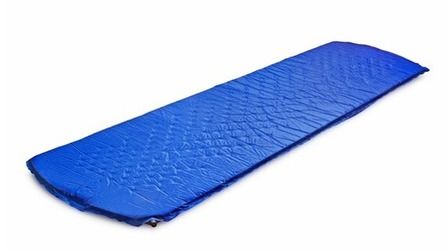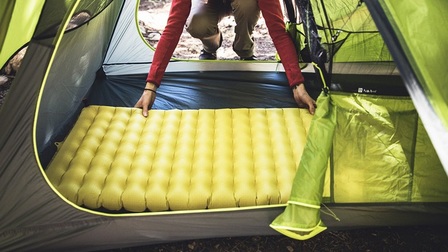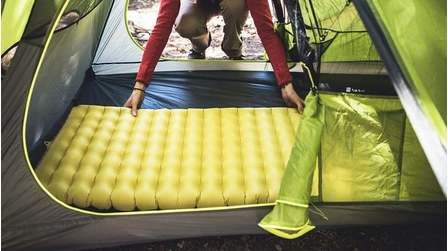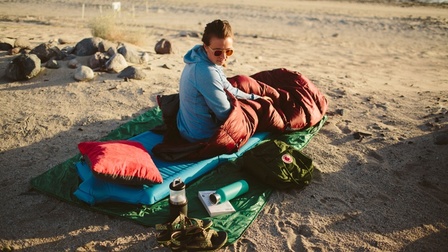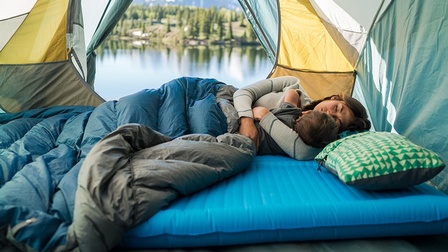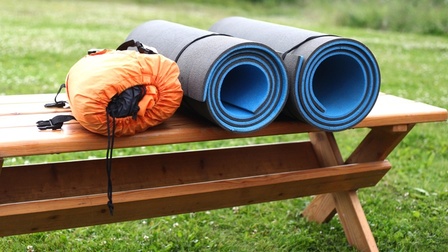For the sake of both comfort and warmth, sleeping pads are crucial to getting a good night's rest in the backcountry. But how do you know which one is right for you?
Let's talk about how to choose sleeping pads for backpacking.
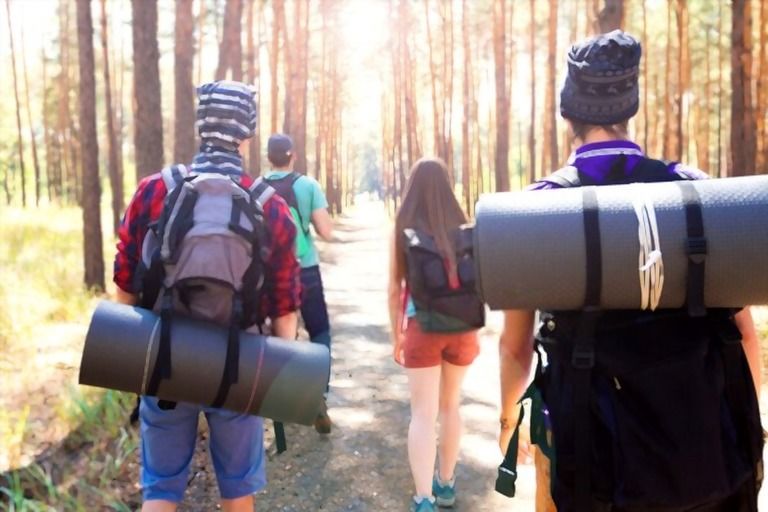
Factors To Consider
When choosing a sleeping pad there are 3 main factors that you'll want to consider: comfort, weight & inflation.
Comfort generally comes from thicker cushy or sleeping pads but you can gauge this by trying out a couple. You can do that at your local REI weight is pretty self-explanatory which leads us to insulation.
Most manufacturers will use a number called an r-value to gauge how well their pads resist heat transfer from your body into the ground. The higher the R value, the more insulation the sleeping pad provides.
A silly pad is a crucial part of your sleep system and your sleeping bag alone won't provide enough warmth without a proper sleeping pad.
Types Of Sleeping Pads
Air Pads
So the first type of pads we're going to talk about is air pads. These are pretty self-explanatory you blow air into them either with your mouth or with a lightweight pump and then that's your mattress for the night.
These are very thick and comfortable while still being lightweight and most of them are packable about two the size of a water model. They also come in a wide range of insulation options. So it just as an example: this pad here has an r-value of under one so it's truly a summer weight sleeping pad and then this one is an r-value of 5.7 so it's great for winter camping.

Air pads provide insulation by having extra layers in between the exterior so that might be an insulation layer and or some sort of reflective layer. You can also adjust the firmness on an air pad by allowing some air out of the valve.
Like I said, air pads are lightweight and compact, which comes with an automatic increase in price. You also need to keep an eye out for sticks or their sharp objects as they are easy to puncture. But most air pads will come with a lightweight patch kit and they're very easy to repair in the field.
Some material on air pads can also be crinkly so that's something to take a listen for if you are a light sleeper, also side sleepers sometimes find these to be not as comfortable because their hips will touch the ground.
These are a great option for backpackers that are looking to minimize weight while maximizing comfort and pack ability on the trail and most lightweight backpackers will choose to use an air pack. I have an air pad and I love it.
Self-Inflating Pads
Self-inflating pads use an open-cell foam to provide structure as well as insulation. I have a cutaway piece here of what a self inflating pad looks like and you can see that if you were to store this you'd roll it up and that will compress all the air out but then if you were to open the valve, this sucks all the air back in and the pad self inflates.
In general, you'll probably have to blow some air into this to get it to its maximum comfort level, but they're pretty hassle-free.
Self-inflating pads are comfortable and they provide a lot of insulation. They're also a really good choice for people who want something kind of a middle-of-the-road in terms of cost and they're really comfortable for certain types of sleepers such as side sleepers.
These pads are a bit bulkier and they're heavier than their air pad counterparts and they are prone to getting punctures just like air pads again they're very easy to repair in the field.
Self-inflating pads are a great choice for backpackers who are looking for a little bit of extra comfort and don't mind the slight add in bulk and weight.
Closed-Cell Foam Pads
The last type of pad we're going to talk about is closed-cell foam pads. These sleeping pads is the large rolled or folded pads that you see strapped to the exterior of people's packs.
They use a dense foam that doesn't need to be inflated and therefore can't be popped, or really destroyed at all. You can see that this pad here has taken quite a lot of use and abuse and obviously they still work.

They are lightweight, inexpensive and basically indestructible and I like that you can use them as a sip pad at camp. They are pretty bulky so you will need to strap them to the exterior of your pack to carry them. However they aren't the most comfortable of pads.
These are a popular choice for ultralight backpackers or through hikers for their ease of use and their durability. Some people will also use them in conjunction with another type of pad to add some warmth as well as comfort.
Women-Specific Sleeping Pad
Some sleeping pads also have a women's specific version and there are more differences beyond just the color. That's demonstrated here with these two: This orange pad is a unisex pad and you can see where all the dots are those represent holes that are punched out of the foam to cut down on weight.

Because women tend to need more insulation in their core and at their feet, this women's version of the pad has fewer holes cut out at the torso and at the feet.
Women specific pads also have a slightly different shape than unisex pads and they tend to be shorter so they're a good choice for shorter backpackers as well.
Conclusion
I tried my best to cover all important aspects you need to consider when buying a sleeping pad in this article. Before spending money on one, consider how you’re going to use it. I hope you found the right one for you.

 Bryan Listor
Bryan Listor